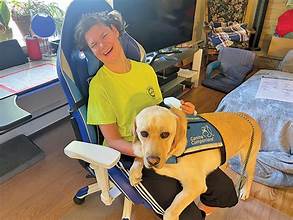Why Advocacy Matters
As a parent of a child with ADHD, a learning disability, or other special needs, you play a crucial role as your child’s strongest advocate. All schools are required by law to provide accommodations for students with disabilities. But it’s your clear communication, persistence, and confidence that often make the difference in getting the proper support.
Advocating effectively ensures your child has the tools they need to not just cope, but to thrive academically, socially, and emotionally, including access to service or therapy animals when appropriate.
Step 1: Know Your Rights
Understanding your legal rights is the foundation of advocacy:
- IEPs fall under the Individuals with Disabilities Education Act (IDEA).
- Section 504 of the Rehabilitation Act covers 504 Plans
- Both laws require schools to provide reasonable accommodations to ensure your child has equal access to education.
Tip: Keep copies of IDEA and Section 504 summaries readily available and refer to them as needed.
Step 2: Be Prepared
Before meetings:
- Gather all documentation (evaluations, medical notes, teacher feedback, behavioral observations).
- Create a list of challenges your child faces and the accommodations you believe will help address them.
- Know what you want from the meeting — specific supports, service animals, or classroom modifications.

Example:
If your child has ADHD, you might request: extended test time, movement breaks, a quiet workspace, or permission for a service dog to help with focus and anxiety.
Step 3: Communicate Clearly and Respectfully
- Use specific examples of how your child’s disability affects learning.
- Focus on solutions, not just problems.
- Keep all communication, including emails, letters, and meeting notes, well-documented.
Sample phrasing:
“My child struggles to complete tests on time due to ADHD-related attention challenges. I would like to request extended time and a quiet space for testing to support their learning.”
Step 4: Collaborate With the School
- Treat teachers, administrators, and specialists as partners, not adversaries.
- Ask questions like:
- How will progress be measured?
- Who is responsible for implementing the accommodations?
- How often will we review the plan?
- How will progress be measured?
- Offer to share strategies that work at home, which can help the school implement accommodations more effectively.

Step 5: Follow Up
- After the meeting, review the finalized plan to ensure all accommodations are included.
- Monitor the school to ensure that accommodations are being used as intended.
- Schedule follow-ups or request amendments if your child’s needs change.
Pro Tip: Keep a running log of what works and what doesn’t — this helps during annual reviews or when requesting changes.
Step 6: Include Service or Therapy Animals When Needed
- If a service or therapy animal supports your child’s learning, include it in the IEP or 504 Plan.
- Provide documentation from a qualified professional explaining the animal’s role.
- Discuss the logistics of the new accommodations with the school. Including details such as where the animal will be housed, training rules, and responsibilities.
Final Thoughts
Advocacy is an ongoing process, not a one-time event. Your knowledge, persistence, and collaboration make a tangible difference in your child’s school experience.
Being well-informed, prepared, and proactive for your child. You help ensure your child receives the best possible care. Including all of the accommodations they are legally entitled to, creating an environment where they can thrive academically, socially, and emotionally.




